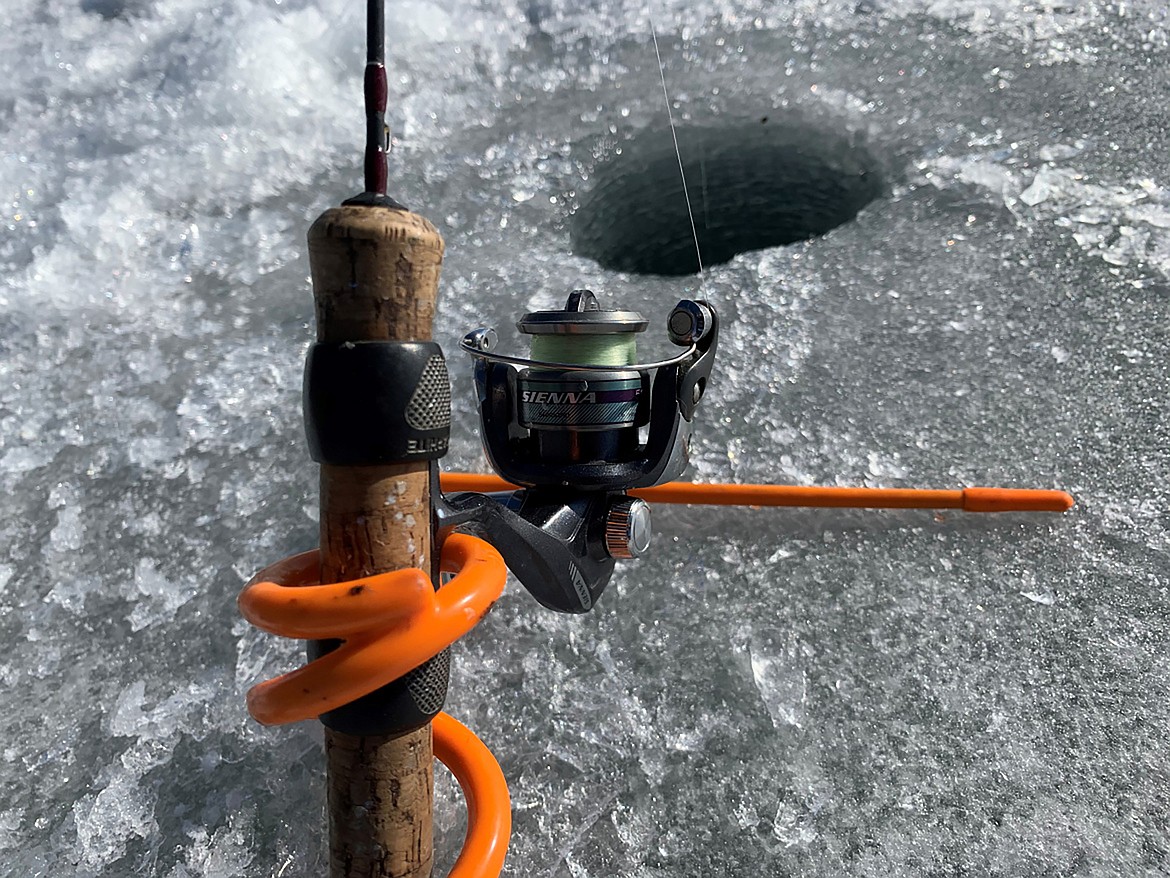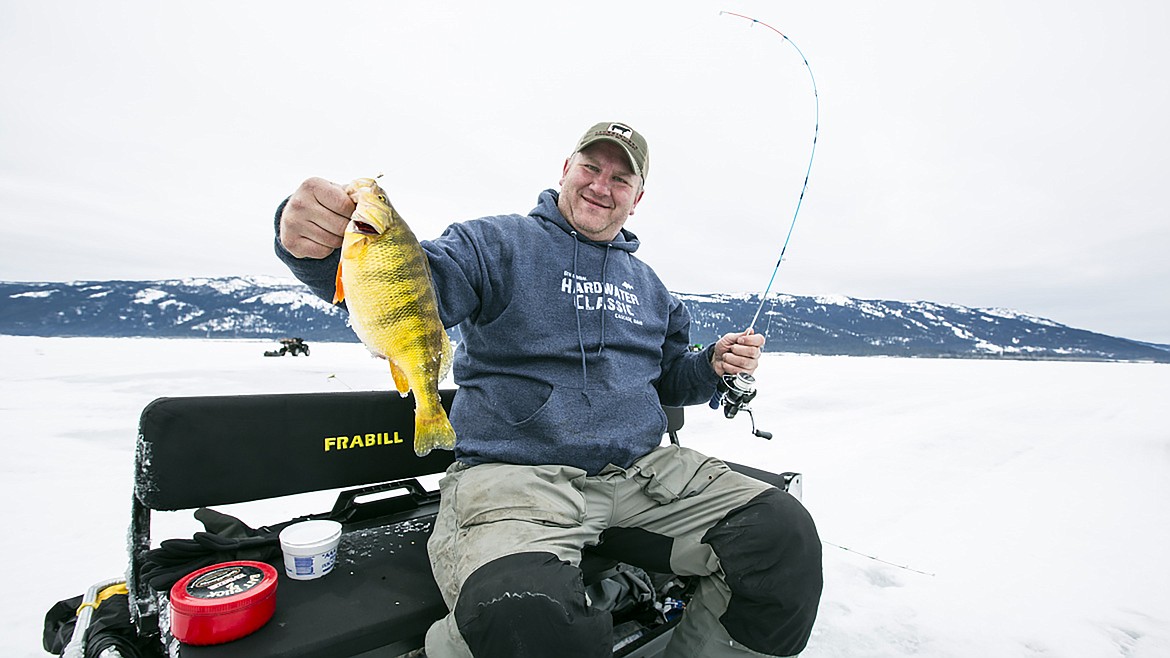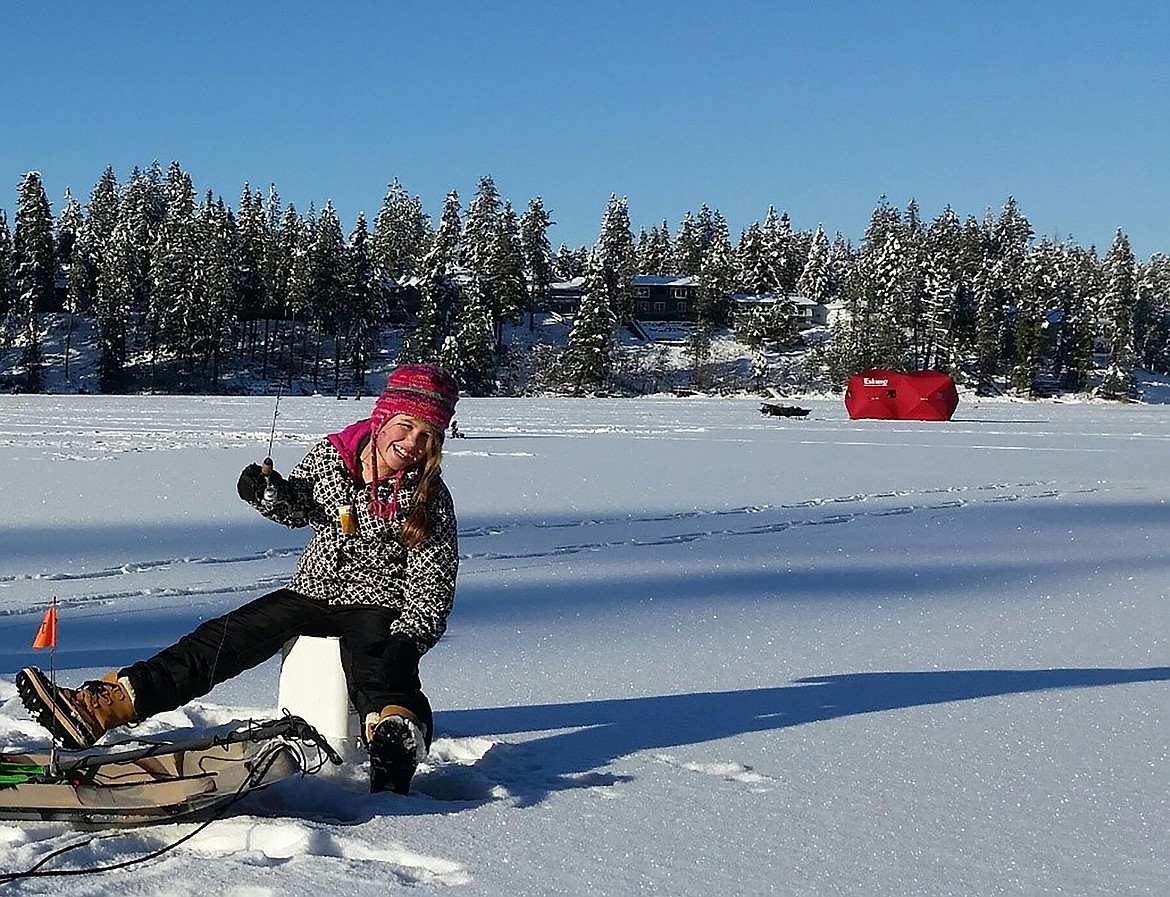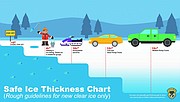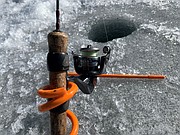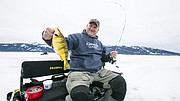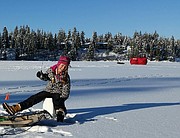Ice fishing is a fun way to extend your fishing season
Unless you’re a hockey player or margarita, ice can get a bad rap. It glazes your windshield, covers your driveways and makes the highways slicker than snot. But when it comes to lake fishing in the winter, ice is a big bonus.
“Winter arrived a little early for many parts of Idaho this year, and that means ice fishing opportunities in different parts of the state are increasing by the day, said Nathan Tillotson, Upper Snake regional fisheries biologist.
“Ice fishing for both cold and warm water species can be spectacular during the early ice season, but always be sure to exercise caution when venturing out on the ice. Ice conditions on all types of waterbodies can be variable, and just because there is safe ice in one area doesn't mean it will be safe everywhere. Carry a spud bar, check ice thickness often, and don't go alone.”
Ice access and safety
When choosing a place to go ice fishing, pay close attention to access. You will need a parking area and an easy place to walk onto the ice. If you have been to a lake or reservoir during summer, those access sites could be blocked by snow. Fish and Game partners with various agencies to help provide ice fishing access by maintaining winter parking lots in many locations.
Before racing out on to the ice like Apolo Ohno at the Olympics, anglers must ensure safe ice conditions – ice must be a minimum 4 inches thick. It can be a bit of a challenge checking the ice status of your favorite lake or reservoir. Idaho is a diverse state when it comes to climate and geography, so conditions could be hit or miss depending on when you’re looking to go.
Where should I go?
Whether you’re up in the Panhandle or hugging the Utah border down in the southeast region, the Gem State has no shortage of destination ice fisheries. From world-record perch in Cascade to trophy rainbow trout in Henrys Lake, Idaho is home to a wide array of lakes and reservoirs, so it might be a little daunting to pick one for a weekend. Depending on where you go, be sure to review the fishing destination’s bag limits and check for any season closures.
Getting in gear
Ice fishing is exactly what it sounds like: Armed with nothing more than a rod, some basic bait and tackle, a valid Idaho fishing license and a well-placed hole in the ice, anglers can find a relatively inexpensive and exciting way to stay busy during the colder months. But anglers should also look into some other gear they may want to add to their lineup.
Sleds
Whether you’re walking, skiing, or snowmobiling to your ice fishing spot, having a small sled to store your gear in can be really nice. This will help you stay mobile so you can move around the lake more as the fish move.
Ice auger
It’s a little hard to ice fish when the fish are protected by 5 or more inches of ice. Augers and scoops don’t have to be fancy. Depending on the size of fish you’re targeting, you’ll need anywhere from a 5-inch to a 10-inch hole (10 inches is the maximum hole size in Idaho). Small hand augers are really light weight and easy to use, and many of them can be used with the aid of a cordless power drill. Some new ice augers are powered by lithium batteries making them really lightweight and reliable (as long as the battery is charged). Pro-tip: Keep your lithium battery inside your jacket to keep it warm – otherwise you may get all the way out to your spot and your battery is dead. Gas powered augers are another reliable option, and are much less costly than the new lithium products.
Scoop
Add a slotted spoon or ice scoop to your tackle box. Having a tool that isn’t your bare hand to scoop out the slush around an ice hole is a game changer. Don’t be caught without one.
Maps and electronics
Figuring out where the fish are is the most important aspect of ice fishing. There are two pieces of technology that can really up your game in terms of finding fish. The first one is a bathymetric map of the lake (contour map). Being able to locate shallow versus deeper areas of the lake, drop-offs, and underwater channels can be a game changer. There are several companies online that sell these. Do your research and find the best one for the lake you’re going to fish.
The second piece of gear that will help you find fish is an electronic fish finder. The options are almost overwhelming when you look at all the different types of fish finders out there. Ranging in price from $200 to over $1,000, the only similarity between them all is that they aren’t cheap, but they’ll greatly increase your chances of catching fish. Using a fish finder allows to you see if the fish are there or not so you're not wasting your time where there are not fish. After you find them, you're in business, or you may find what you're using for bait or lures isn't working, so it's time to switch.
Some hot tips
Now that you got your prime ice fishing spot scoped out and have confirmed ice conditions are safe, here are a few hot tips to keep in your back pocket.
Bring some cushion. Unless you like having only a layer of polyester between your rear and the ice, it’d be a smart move to bring something to sit on. Not only will it keep you slightly warmer, it will be a lot more comfortable in the long run.
Use electronic fish-finders. Knowing where the fish are can save you a lot of time and headache when prospecting for fish on thick ice.
Dress warm. That may sound obvious, but adding an extra layer or two to your backpack might serve you well in case of unpredictable weather. Bring spare gloves in case your first pair gets wet.
Don’t venture too far out. Most anglers have the best luck in around 5 to 20 feet of water.
And lastly (and most importantly) stay mobile. If you don’t get any tugs after 10-20 minutes at a spot, keep moving. Just because a fishing spot is hot in the summer, doesn’t necessarily mean it will be come winter time.
Be sure to check out Fish and Game’s Idaho Fish Planner to learn more about each ice fishery, safety tips, access sites and seasons and regulations, and to plan out your next weekend fishing trip. Be sure to check out Fish and Game’s ice fishing webpage for more details.



